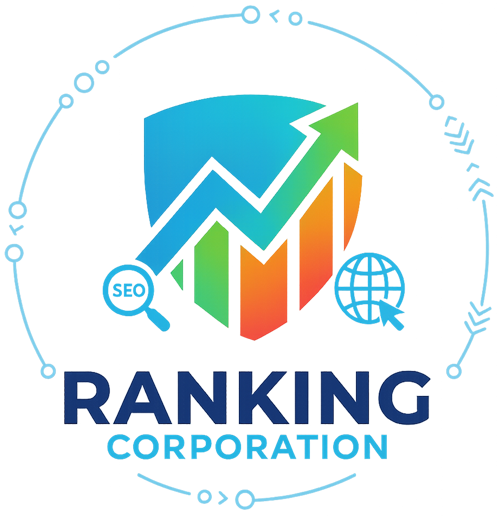
Link building remains a cornerstone of search engine optimization (SEO). As Google’s algorithms evolve, acquiring high-quality backlinks has become more nuanced. In 2025, safe and effective link-building strategies require a combination of technical expertise, content marketing, and relationship-building. This guide will cover everything you need to know to succeed with link building this year.
Chapter 1: Understanding Link Building in 2025
1.1 What Is Link Building?
Link building is the process of acquiring hyperlinks from other websites to your own. These backlinks are a signal to search engines that your content is authoritative and trustworthy.
Key points:
- High-quality backlinks improve search engine rankings.
- Spammy or low-quality links can result in penalties.
- Links are also a source of referral traffic from users navigating from other websites.
1.2 How Link Building Has Evolved
Link building has changed drastically over the past decade:
| Year | Trend |
| 2010 | Quantity over quality: mass link directories, blog comments, link farms. |
| 2013 | Google Penguin update penalizes spammy links. |
| 2017 | Content-driven link building gains prominence. |
| 2020 | Emphasis on relevance and domain authority. |
| 2025 | AI-driven analysis, niche-specific links, and relationship-based strategies dominate. |
In 2025, quality and relevance outweigh quantity. Google’s algorithms can detect manipulative link schemes, so safe, natural methods are essential.
Chapter 2: The Importance of Safe Link Building
2.1 Avoiding Penalties
Unsafe link-building tactics, such as buying links or using link farms, can result in:
- Manual penalties from Google
- Algorithmic de-ranking
- Loss of trust and authority
Safe link-building focuses on organic, editorially earned links.
2.2 Boosting SEO Performance
Quality backlinks:
- Improve domain authority
- Increase visibility in search results
- Drive targeted referral traffic
Research shows that websites with high-quality backlinks rank significantly higher than those with few or low-quality links.
Chapter 3: Key Link Building Strategies in 2025
3.1 Content-Driven Link Building
High-quality content naturally attracts backlinks. Effective methods include:
- In-depth guides and tutorials: Long-form content often earns links from educational and professional sites.
- Infographics and visual assets: Easily shareable visuals can generate backlinks from blogs and media outlets.
- Data studies and research reports: Original research is highly linkable in your industry.
Example: A digital marketing agency publishes a study on AI in SEO. Tech blogs, news sites, and other agencies link to the study as a credible source.
3.2 Guest Posting
Guest posting remains a safe and effective strategy when done correctly:
- Identify high-authority sites in your niche.
- Create valuable, non-promotional content.
- Include contextual backlinks within the content.
Tips for success:
- Avoid sites solely designed for link building.
- Focus on sites with active audiences and engagement.
- Personalize pitches to website editors or content managers.
3.3 Skyscraper Technique
The skyscraper technique involves:
- Finding high-performing content in your niche.
- Creating a better version with more depth, visuals, or updated data.
- Reaching out to websites that linked to the original content to link to yours.
This method focuses on value-driven link building, making it both safe and effective in 2025.
3.4 Broken Link Building
Broken link building involves:
- Finding broken or outdated links on authoritative websites.
- Creating content that replaces or updates the broken resource.
- Contacting the webmaster to suggest your content as a replacement.
This strategy is win-win: webmasters fix broken links, and you earn a high-quality backlink.
3.5 Resource Page Link Building
Resource pages are curated lists of helpful content within a niche:
- Identify relevant resource pages in your industry.
- Pitch your content if it adds value or fills a gap.
- Focus on pages with active maintenance and traffic.
Example: A cybersecurity blog maintains a list of top threat intelligence tools. A new tool provider can request inclusion with a link to its guide or software.
Chapter 4: Advanced Strategies for 2025
4.1 AI-Powered Link Prospecting
AI tools help identify link opportunities by analyzing:
- Domain authority
- Relevance and niche alignment
- Existing backlinks of competitors
Popular tools: Ahrefs AI, Semrush Backlink Analytics, LinkGraph AI.
AI allows marketers to prioritize the most high-impact opportunities while avoiding risky websites.
4.2 HARO (Help a Reporter Out)
HARO connects journalists with experts:
- Sign up as a source for niche-related queries.
- Respond promptly with well-crafted answers.
- Earn backlinks from news sites and authoritative publications.
HARO is considered very safe because links are editorially approved.
4.3 Influencer and Partnership Links
- Collaborate with influencers in your industry to create co-branded content.
- Partner with complementary businesses for cross-promotional articles.
- Ensure links are natural and contextually relevant.
4.4 Podcast and Video Backlinks
- Appear as a guest on podcasts relevant to your niche.
- Link your website in show notes or descriptions.
- Create video tutorials that others reference, driving backlinks.
Chapter 5: Link Building Metrics to Track in 2025
To ensure effectiveness, track key metrics:
| Metric | Why It Matters |
| Domain Authority (DA) | High DA sites pass more value. |
| Referring Domains | Diverse sources are safer than multiple links from the same site. |
| Organic Traffic | Links should drive real visitors, not just SEO signals. |
| Anchor Text Diversity | Avoid over-optimized anchor text. |
| Spam Score | Low spam score ensures safe links. |
Chapter 6: Common Mistakes to Avoid
6.1 Buying Low-Quality Links
- High risk of penalties
- Often irrelevant or spammy
6.2 Overusing Exact-Match Anchor Text
- Triggers spam filters
- Use natural, branded, or long-tail variations
6.3 Ignoring Link Relevance
- Links must come from niche-relevant sources
- Irrelevant links offer little SEO value
6.4 Neglecting Relationship Building
- Cold emailing without context often fails
- Build genuine relationships before requesting backlinks
Chapter 7: Link Building Trends in 2025
7.1 Niche Relevance Over Domain Authority
Google values contextual relevance over sheer domain authority. Links from smaller, niche-specific websites often outperform general high-authority links.
7.2 AI and Automation
- AI helps identify link opportunities
- Automated outreach can assist, but personalization remains key
7.3 Earning Editorial Links
- Google increasingly rewards editorially approved links
- Organic mentions and citations are safer than reciprocal or purchased links
7.4 Integrated Content Marketing
- Link building is now part of a holistic content strategy
- Quality content drives links naturally over time
Chapter 8: Step-by-Step Link Building Plan for 2025
- Audit Existing Backlinks
- Identify toxic or low-quality links
- Disavow harmful links
- Create High-Value Content
- Research trending topics
- Include original data, visuals, and guides
- Identify Prospective Sites
- Use AI tools and competitor backlink analysis
- Prioritize relevance and authority
- Outreach and Relationship Building
- Personalize emails
- Offer guest posts, collaborations, or content contributions
- Track and Measure
- Monitor new backlinks
- Analyze traffic and keyword improvements
- Adjust strategy based on performance
Chapter 9: Tools and Resources for Link Building
- Ahrefs: Backlink analysis, link prospects, competitor tracking
- Semrush: Comprehensive SEO toolkit
- Moz Link Explorer: Domain authority, link research
- BuzzStream: Outreach and relationship management
- HARO: Journalist connections for high-authority mentions
- LinkGraph AI: AI-driven link opportunities
Conclusion
Link building in 2025 is about safety, relevance, and value. The era of spammy links and shortcuts is over. Modern link-building strategies focus on:
- High-quality, content-driven backlinks
- Niche relevance and editorial approval
- AI-assisted prospecting without losing personalization
- Integrating link building into content marketing and outreach
By following these safe and effective strategies, businesses can:
- Improve search engine rankings
- Gain high-quality referral traffic
- Establish authority and credibility in their niche
- Avoid penalties and long-term SEO risks
The future of SEO is ethical, strategic, and relationship-driven. Link building in 2025 is less about quantity and more about quality, relevance, and sustainable growth.





